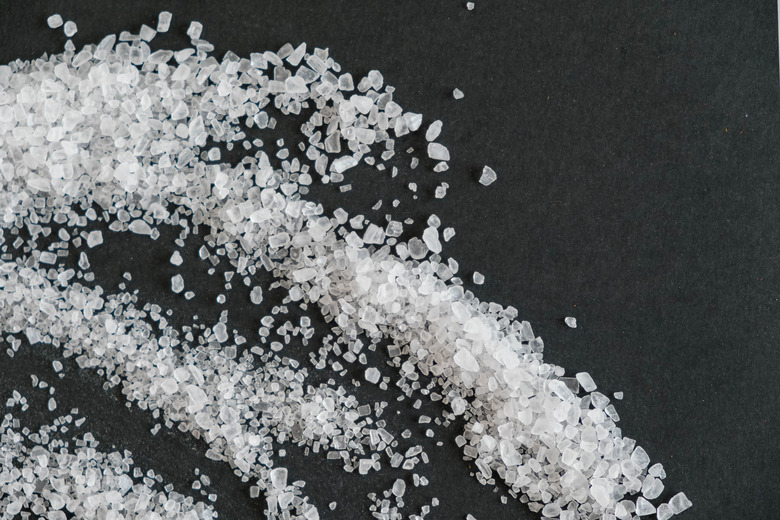Sugar Dissolves In Water Faster Than Salt Science Projects
When a substance dissolves in another substance, it forms a solution. The substance being dissolved is called the solute, and the substance it is dissolving into is called the solvent. Sugar and salt both dissolve in solution relatively easily, but one dissolves quicker than the other. A simple experiment can determine which one dissolves faster.
Experiment Setup
Experiment Setup
To do this project you will need a supply of both salt and sugar as well as a way to measure out equal amounts of both substances. You will also need at least three solvents, with one of them being water. Suggested solvents include distilled vinegar and rubbing alcohol. Be sure to allow all three solvents to reach room temperature before you run the experiment. Label three cups with the names of the solvents and the word salt, then label the other three with the names of the solvents and the word sugar.
Collecting Data
Collecting Data
Make a data table that includes all three solvents for both sugar and salt. The table should include a start time, stop time and elapsed time to record how long it took each solute to dissolve. For greater accuracy, run the test two or three times for each solute in each solvent and average the findings together. Perform the experiment by pouring equal amounts of your solvent in six cups. Add one teaspoon of salt to one of the cups and record how long it takes to dissolve. Repeat this for the other two solvents, then repeat again for sugar in all three solvents. Record all your data in your table.
What Happens
What Happens
In this experiment, sugar should dissolve faster in solvents than salt does. The reason for this is because the sugar molecules are bigger than the ions of dissolved salt. This allows for more water molecules to surround a single particle, pulling it into solution faster. Also, because a molecule of sugar is much larger than a sodium or chlorine atom, fewer molecules are found in a teaspoon of sugar than salt, leaving fewer molecules to be pulled into solution.
Changes in the Experiments
Changes in the Experiments
This experiment can be changed to include different variables. For example, the temperature of a solvent affects its ability to dissolve solutes. You could run the experiment again, using temperature as a variable for each solvent. Another variable you could test would be the solubility of different types of sugar or salt. Use the larger crystals of sea salt or the smaller crystals of powdered sugar to see if this affects solubility rates. Finally, another variable that could be added to the experiment is how much stirring the solution affects the ability of a solute to dissolve.
Cite This Article
MLA
Carr, Kevin. "Sugar Dissolves In Water Faster Than Salt Science Projects" sciencing.com, https://www.sciencing.com/sugar-faster-salt-science-projects-8384231/. 26 April 2018.
APA
Carr, Kevin. (2018, April 26). Sugar Dissolves In Water Faster Than Salt Science Projects. sciencing.com. Retrieved from https://www.sciencing.com/sugar-faster-salt-science-projects-8384231/
Chicago
Carr, Kevin. Sugar Dissolves In Water Faster Than Salt Science Projects last modified August 30, 2022. https://www.sciencing.com/sugar-faster-salt-science-projects-8384231/
